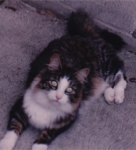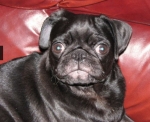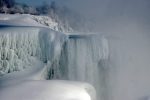General Discussion on any topic relating to CPAP and/or Sleep Apnea.
-
akj
- Posts: 5
- Joined: Sun Oct 27, 2013 11:53 pm
Post
by akj » Tue Oct 29, 2013 3:30 am
Hi Friends
I am 51 years male, suffering from OSA since last 12-15 years, Now using System one Remstar auto with A-flex (561P) CPAP since last 6 moths. The pressure range is 10-16. Though so far I have spectacular results and feeling reborn after using CPAP but my average AHI is consistently quite high 11-15. Some days when my CA is down then it goes down to 7-8 but never below the safe limit of 5.
Since the high CA index is the major factor of my AHI while OSA and Hypo index on lower side, I am puzzled what may be causing this CA. Otherwise I am quite healthy, energetic, average build person working in Software field and don't suffer any other disease except high BP which is controlled by mild medication.
I am attaching some data & graphs that may be useful, would appreciate any help.




-
Julie
- Posts: 20051
- Joined: Tue Feb 28, 2006 12:58 pm
Post
by Julie » Tue Oct 29, 2013 4:14 am
Hi - you didn't mention what mask you use and I wonder if you're losing Cpap air via mouth breathing when asleep. They don't always show up in leak results, esp. if particularly large.
-
akj
- Posts: 5
- Joined: Sun Oct 27, 2013 11:53 pm
Post
by akj » Tue Oct 29, 2013 4:27 am
Hi - I use Comfortgel full face mask with headgear. I have noticed that I do lose some air through mouth when sleeping on my side. But don't want to tighten the mask any more as it leaves the marks on my face in morning.
-
Tom W
- Posts: 223
- Joined: Thu Sep 01, 2011 4:59 am
- Location: West Central Florida
Post
by Tom W » Tue Oct 29, 2013 5:28 am
You might have what is known as Complex Sleep Apnea.
The use of CPAP can, in some circumstances, cause Central Sleep Apnea while curing Obstructive Sleep Apnea.
Since you're using an Auto setting it makes sense that the pressure setting is accurate (not too high).
With a CAI that high I would discuss the use of an ASV machine with your doctor (in fact I wouldn't take NO for an answer).
They can be difficult to get approved by insurance companies but they're the only CPAP machine that actually treats Central/Complex Sleep Apnea.
-
john5757
- Posts: 341
- Joined: Fri Jun 10, 2005 7:48 pm
Post
by john5757 » Tue Oct 29, 2013 6:36 am
Looks like the snore rate is quite high and your machine is bumping at the max setting of pressure.
_________________
| Machine | Mask | |
 |  |
-
Pugsy
- Posts: 65147
- Joined: Thu May 14, 2009 9:31 am
- Location: Missouri, USA
Post
by Pugsy » Tue Oct 29, 2013 7:24 am
Can you post a couple of the nightly detailed graphs...one for a good night with low AHI and one for a bad night with high AHI?
Is there any difference in overall sleep quality between a "good" night and a "bad" night.... as in do you wake often on the bad night and sleep pretty soundly on a good night?
I may have to RISE but I refuse to SHINE.
-
JDS74
- Posts: 3397
- Joined: Sun Jan 23, 2011 2:57 pm
- Location: South Carolina
Post
by JDS74 » Tue Oct 29, 2013 8:05 am
Two comments:
1) Your upper pressure limit is not high enough to treat your non-CA Events well. Hypopneas and snore events come from the pressure being too low. Have you tried raising the EPAP just a little?
2) Its likely that you would get better results with an ASV machine like the PR System One 960P.
Show your reports to your doc including the waveform reports so he can see the extent of you CA's and how long they are.
Oracle 452 Lessons Learned Updated
DSX900 AutoSV with HC150 extra humidifier and Hibernite heated hose
Settings: EPAP Min-10.0, EPAP Max-17, PS Min-3, PS Max-10, Max Pressure-20, Rate-Auto, Biflex-1.
Sleepyhead and Encore Pro 2.21.
-
akj
- Posts: 5
- Joined: Sun Oct 27, 2013 11:53 pm
Post
by akj » Wed Oct 30, 2013 6:12 am
-
JDS74
- Posts: 3397
- Joined: Sun Jan 23, 2011 2:57 pm
- Location: South Carolina
Post
by JDS74 » Wed Oct 30, 2013 7:10 am
AKJ
Looking at the two graphs, I see that you are peaking out on high IPAP pressure more often on the "bad" night as compared to the "good" night.
This may be causing an increase in pressure induced central apneas.
It appears as if your overall pressure (EPAP) is too low to completely treat your snoring.
One result of changing that is a likely increase in central apneas.
You should take several days of charts like these as well as a couple of days of waveform charts to your doc to see if a new sleep study is called for. Perhaps a split night titrating your normal CPAP followed by an ASV titration.
Oracle 452 Lessons Learned Updated
DSX900 AutoSV with HC150 extra humidifier and Hibernite heated hose
Settings: EPAP Min-10.0, EPAP Max-17, PS Min-3, PS Max-10, Max Pressure-20, Rate-Auto, Biflex-1.
Sleepyhead and Encore Pro 2.21.
-
Pugsy
- Posts: 65147
- Joined: Thu May 14, 2009 9:31 am
- Location: Missouri, USA
Post
by Pugsy » Wed Oct 30, 2013 8:22 am
First of all we have no way to know if those CAs are pressure induced centrals at this point. They might be and they might not be.
They might also be post arousal sleep onset centrals or awake/semi awake breathing.
The CAs at the very beginning of the night and at the end of the night might be awake/semi awake breathing irregularities getting flagged by mistake.
The presence of the snores along with the FLs and the OAs does most likely mean that the minimum pressure is not set quite high enough. It's not able to keep the airway stented open well enough to prevent the collapse of the airway that is happening...the snores and FLs and the OAs are signs of the airway still wanting to collapse and the machine can't respond quickly enough with the pressure increases to stop it from happening. The OAs and FLs and hyponeas could be causing some low level arousal and that in turn could be letting there be more sleep onsets..and thus more chance of a sleep onset central happening.
I have seen many a ugly CA count get reduced simply by reducing the OAs, FLs and Hyponeas with a little more pressure. Not all centrals are pressure induced centrals meaning complex sleep apnea
So this may or may not be complex sleep apnea going on here. The PB...not in numbers enough to cause panic.
So I don't want to cause panic but I also don't want to pooh pooh this ugliness off. I do think you need to bring your doctor in on this and see what he wants to do.
It's pretty obvious the minimum pressure in apap mode is not quite getting the job done. So you likely need more minimum pressure...will it cause more centrals though?... that's an unknown until it is tried.
If it is complex sleep apnea...apap mode probably isn't the best mode but it doesn't automatically mean that you earn a trip to the ASV type of machine either. Sometimes a happy medium can be found that takes care of the obstructive apnea elements and doesn't trigger the centrals. Like increasing the minimum pressure but reducing the maximum so it doesn't go climbing sky high trying to zap those snores and FLs.
I am unclear on your history...did you have a titration study 6 months ago when you got this machine or has it been some time since a titration study and this machine was just a new addition and you have been on the machine for quite some time?
If you had a titration study 6 months ago and these centrals were present...they should have been caught in the titration study if they were related to pressure. If you haven't had a titration study for quite some time....you may need one so that these centrals can be evaluated by a sleep tech to make sure just exactly what they are (real which would be worrisome or maybe semi awake stuff which wouldn't worrisome)
Oh...you don't take any meds that might suppress respiration do you? Like narcotics/opiates..recreational crap?
I may have to RISE but I refuse to SHINE.
-
robysue
- Posts: 7520
- Joined: Sat Sep 18, 2010 2:30 pm
- Location: Buffalo, NY
-
Contact:
Post
by robysue » Wed Oct 30, 2013 11:19 am
Following on the heels of Pugsy's excellent post:
1) We do need to know more about your titration history: When was the titration study? And did either the diagnostic or titration sleep studies mention central apneas as being present in clinically significant numbers?
2) Pugsy is right when she says that it's important to try to tease out whether these are post arousal centrals (where a slight increase of the min pressure setting might lead to a decrease in the snoring and the obstructive events, which in turn might lead to a reduction in CAs), pressure induced centrals (where an increase in pressure might make the problem worse), or normal sleep transition centrals that would not be scored on an in-lab PSG because they're "normal". She's also asking good questions about whether you're taking any meds that might be influencing what's going on in your sleep or what might triggering some tendencies to have some CAs during the night. Knowing more of your titration history and whether CAs were present during either your diagnostic or titration sleep studies will help tease out what's the most likely cause of the CAs you're seeing on the Encore reports.
If you're absolutely set on dial winging right now, a small increase in your min pressure setting (from 10 to 10.5 or 11) might be worth experimenting with for a week or so---if there's not an alarming jump in the the number of CAs during the first couple of nights. But do keep in mind that it takes a week or so to get enough data to tease out whether the new setting is really making any difference or not.
Given the CAs and my lack of knowledge of when the titration test was done and what (if anything) was said about central apneas on the diagnostic and titration studies, I am very reluctant to suggest any changes beyond a minimal change in the min pressure setting. I would NOT increase the top pressure at this time even though you are spending some significant time maxed out.
-
Pugsy
- Posts: 65147
- Joined: Thu May 14, 2009 9:31 am
- Location: Missouri, USA
Post
by Pugsy » Wed Oct 30, 2013 11:49 am
I also agree with Robysue in that increasing the max is not the way to go at this time. There's a good chance that if the minimum pressure was more optimal and did a better job of preventing the obstructive elements that the pressure might stabilize and not want to go up so high in an effort to fix things...better to be in preventative mode than fix it mode. So even if the centrals were real and related to pressure (big IF right now) if the pressure didn't climb the centrals might not show up in such ugly numbers.
Fix the obvious and maybe the other stuff won't materialize and need fixing. Try simple things first.
Like Robysue if I was going to do any dialawinging...just a little more minimum pressure (like 0.5) just to see what happens. Very small increase and watch things closely. Might even consider reining in the maximum a bit based on what we might see with the increase in minimum. A really tight range in minimum and maximum might be an option to consider. Not necessarily cpap mode but something similar to cpap mode. With cpap mode we lose FL flagging and I think FL flagging is important.
This machine won't respond to centrals (real or not) but it will respond to snores and Flow Limitations. So if we see a pressure increase around the time of a flagged CA..it's because there was something in the snores or FLs the machine didn't like.
Now if there ever was a history of centrals during the titration study or the diagnostic study...get to the doctor and get his input for sure before doing much dialawinging.
I may have to RISE but I refuse to SHINE.
-
akj
- Posts: 5
- Joined: Sun Oct 27, 2013 11:53 pm
Post
by akj » Fri Nov 01, 2013 9:15 am
Pugsy wrote:I also agree with Robysue in that increasing the max is not the way to go at this time. There's a good chance that if the minimum pressure was more optimal and did a better job of preventing the obstructive elements that the pressure might stabilize and not want to go up so high in an effort to fix things...better to be in preventative mode than fix it mode. So even if the centrals were real and related to pressure (big IF right now) if the pressure didn't climb the centrals might not show up in such ugly numbers.
Fix the obvious and maybe the other stuff won't materialize and need fixing. Try simple things first.
Like Robysue if I was going to do any dialawinging...just a little more minimum pressure (like 0.5) just to see what happens. Very small increase and watch things closely. Might even consider reining in the maximum a bit based on what we might see with the increase in minimum. A really tight range in minimum and maximum might be an option to consider. Not necessarily cpap mode but something similar to cpap mode. With cpap mode we lose FL flagging and I think FL flagging is important.
This machine won't respond to centrals (real or not) but it will respond to snores and Flow Limitations. So if we see a pressure increase around the time of a flagged CA..it's because there was something in the snores or FLs the machine didn't like.
Now if there ever was a history of centrals during the titration study or the diagnostic study...get to the doctor and get his input for sure before doing much dialawinging.
Many thanks Pugsy and Roysue for your support, I don't take any such stuff or medication. My sleep study was done in Mid January and I start using CPAP for the first time in first week of March, though I am a patient of OSA since last many years but was reluctant to use any device.
I have a PDF file of Sleep study but not sure how to attach it, Is it possible to email this to you?
Since I have heavy cold at the moment, I am afraid the results may not be normal for few days and any change in min setting as suggested won't produce the desired analysis. As soon as I am back to normal, shall change the min setting to 10.5 and share the results.
-
Todzo
- Posts: 2014
- Joined: Tue Apr 24, 2012 8:51 pm
- Location: Washington State U.S.A.
Post
by Todzo » Fri Nov 01, 2013 9:53 am
I think that the first thing that you should do is to look at your vitamin D3 levels!
Those who are working with the D3 hormone (A.K.A. Vitamin D3) (e.g. Dr. Stasha Gominak, Michael F. Holick, Ph.D., M.D., Vitamin D Council) seem to be finding that the very low side of the “normal” range of 30-100 ng/L produces a range of symptoms including OSA, pain, and infection. All believe that a level lower than 50 ng/mL is not good and Dr. Stasha Gominak recommends 60-80 ng/mL for good health.
I find that I tend to over breath in the late fall and winter and that my nose grows stuffy if I do which would likely cause sleep breathing problems. This year I am supplementing D3 and doing some very short (2 minutes – no pinking!!) times in the gym tanning booth. I find it easier to breath eucapnically. I also see fewer times of “unstable over breathing” in the data from my CPAP.
It takes about six weeks to see the change.
May any shills trolls sockpuppets or astroturfers at cpaptalk.com be like chaff before the wind!
-
akj
- Posts: 5
- Joined: Sun Oct 27, 2013 11:53 pm
Post
by akj » Fri Nov 01, 2013 8:50 pm
Todzo wrote:I think that the first thing that you should do is to look at your vitamin D3 levels!
Those who are working with the D3 hormone (A.K.A. Vitamin D3) (e.g. Dr. Stasha Gominak, Michael F. Holick, Ph.D., M.D., Vitamin D Council) seem to be finding that the very low side of the “normal” range of 30-100 ng/L produces a range of symptoms including OSA, pain, and infection. All believe that a level lower than 50 ng/mL is not good and Dr. Stasha Gominak recommends 60-80 ng/mL for good health.
I find that I tend to over breath in the late fall and winter and that my nose grows stuffy if I do which would likely cause sleep breathing problems. This year I am supplementing D3 and doing some very short (2 minutes – no pinking!!) times in the gym tanning booth. I find it easier to breath eucapnically. I also see fewer times of “unstable over breathing” in the data from my CPAP.
It takes about six weeks to see the change.
Thanks, I shall get it checked asap.

























